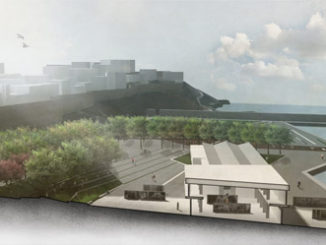Over a the of years, I have seen and heard about final year design studios (design subjects) and have been inspired by the design thinking and ideas presented by students. I also remember back to when I completed my final year design studio at university and then what I experienced as a landscape architect in design firms. I feel that there is a way to improve university design studios to better integrate how practices design into a university landscape architecture program design studio.
I fully support the need for students to learn how to design and the various the theory of various design theories, constructs, paradigms and going through the challenging process of design, however, there is also a place for experiencing collaborative design with other disciplines as may occur in the landscape architecture profession. Therefore, the following is the framework for an ideal design studio from the perspective of a practitioner.
A final year design studio (one or two-semester design studio) would be a culmination of everything learnt during the course (landscape design, history, culture, construction technology) and the application of that learning into one studio which involves students from other programs (Property, Finance, Ecology, Architecture, Engineering, Interiors, etc) that would allow those students to also test, trail and experience their learning in a fully integrate multi-discipline design studio. I am sure that there are some courses in the world that undertake similar inter-discipline design studios (architecture, urban design, construction, etc) however, I feel that these are the exception not the standard approach for landscape architecture programs.
The framework for the final design studio would be to try and replicate a design project as it occurs for each profession (including the trials and tribulations). The studio would involve several different teams who would have 2-3 members from each program and they would be mentored by professionals from each discipline who would attend at regular intervals to act as advisors.
Once a site is selected and a brief and budget are formulated to allow students to explore design, but it also constrains them to a budget, physical site, local regulations and expected outcomes. This may be limiting their imagination and skills, however, having constraints (including financial ones) can often drive innovation and ideas. The course leader, tutors and industry professionals would act as the client with predetermined scenarios to provide input as the client and stakeholders. The different design teams would include a landscape architect, architect, engineers and other program disciplines and would work as one team but similar to many projects they would still work within their own university departments. The mulit-discipline teams would undertake the design studio including site analysis, interviewing stakeholders, and would work in workshops at the concept, design development and final design phases.
This idea to replicate a “real world” project may be looked down upon by many as it is not a pure design studio or testing the student’s design capabilities in line with design schools ideals, but it will allow them to experience designing a project in a collaborative environment with other allied disciplines where it requires the learning of interpersonal skills and empathy for others professionals to create a successful fully resolved design. This type of design studio will also allow students to learn how to obtain advice from other disciplines and learn about their limitations as design professionals.
I hope that this outline generates some discussion in design schools, practices and the broader design community. Feel free to contact me via email me damian@worldlandscapearchitect.com to discuss the ideal final year design studio
Article Written by Damian Holmes is the Founder and Editor of WLA.
He is also a registered Landscape Architect with extensive experience in Australia, Canada, and China.




